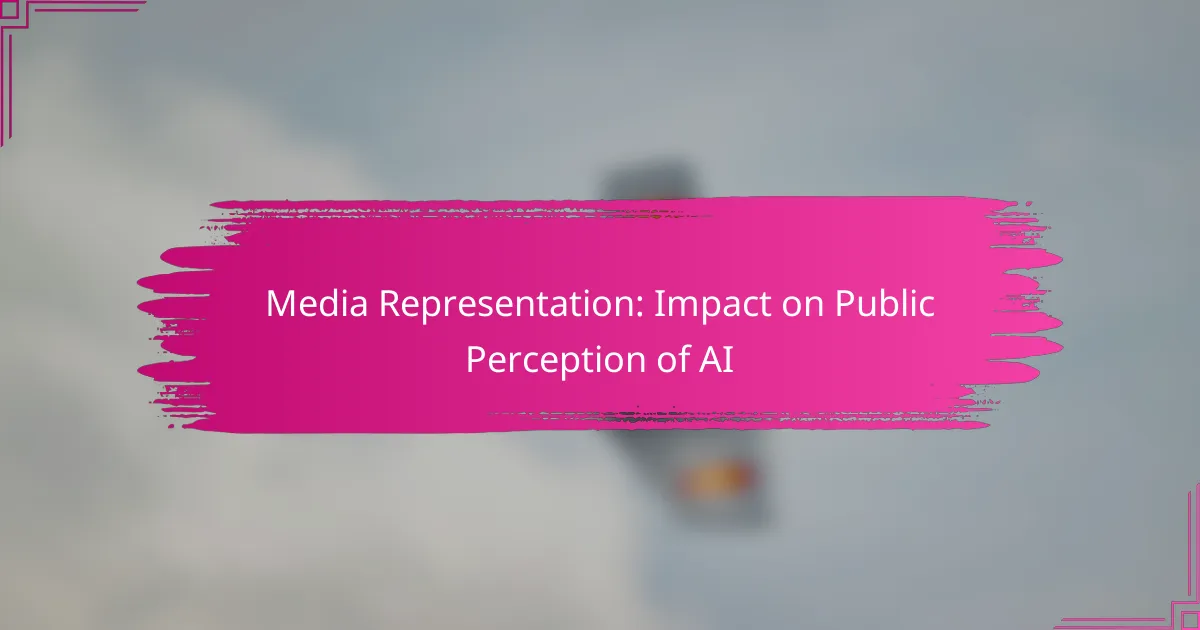Media representation plays a crucial role in shaping public perception of artificial intelligence, influencing how individuals understand and engage with these technologies. Positive portrayals can build trust and acceptance, while negative depictions often lead to skepticism and fear, ultimately affecting societal attitudes toward AI.
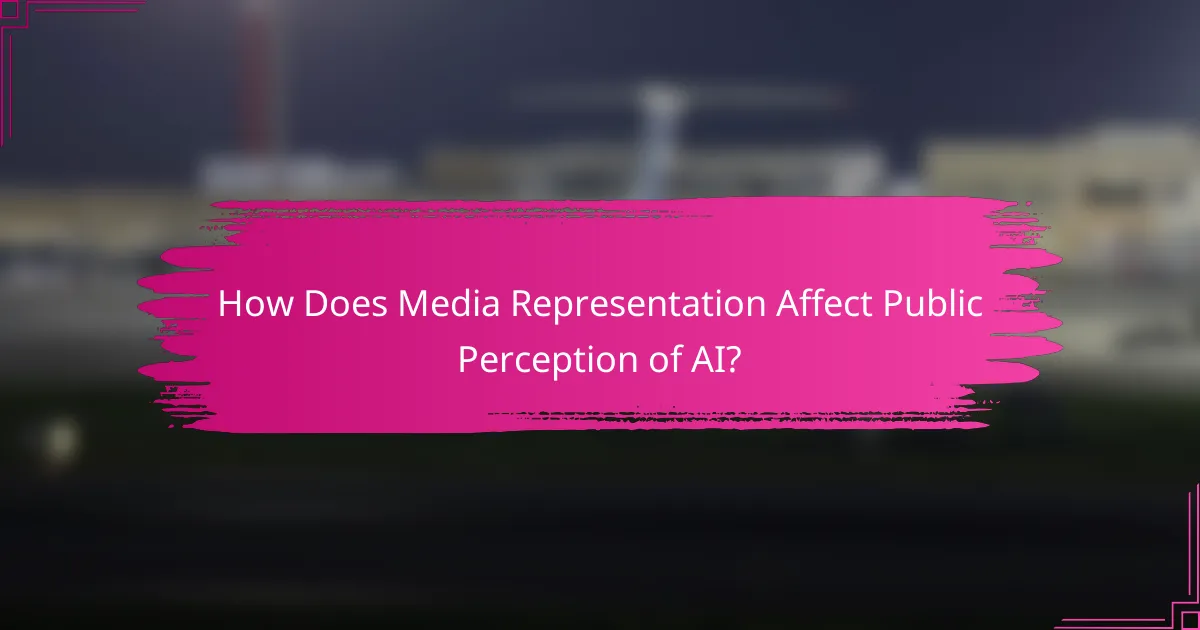
You can explore more about these themes on our homepage.
How Does Media Representation Affect Public Perception of AI?
Media representation significantly shapes public perception of AI by influencing how people understand and relate to these technologies. Positive portrayals can enhance trust and acceptance, while negative depictions may foster skepticism and fear.
You can explore more about this topic in public perception of AI.
Influences trust in AI technologies
Media narratives play a crucial role in building or undermining trust in AI technologies. When AI is depicted as reliable and beneficial, such as in healthcare or finance, public confidence tends to increase. Conversely, stories highlighting failures or ethical concerns can lead to distrust.
For example, news coverage of AI successes in diagnosing diseases can enhance trust, while reports of biased algorithms in hiring can create skepticism. This trust is essential for the adoption of AI solutions across various sectors.
Shapes societal expectations of AI
Media representation shapes societal expectations by framing what AI can and cannot do. When media emphasizes the potential of AI to solve complex problems, it raises public expectations for rapid advancements and widespread applications. However, unrealistic portrayals can lead to disappointment when actual capabilities fall short.
For instance, portrayals of AI as sentient beings in films can create misconceptions about its current state, leading to inflated expectations. Clear, factual reporting can help align public understanding with the actual capabilities of AI technologies.
Drives fear or acceptance of AI
The way AI is represented in the media can drive either fear or acceptance among the public. Sensationalized stories about AI taking jobs or causing harm can instill fear, while positive stories about AI improving lives can promote acceptance and enthusiasm.
To mitigate fear, media outlets can focus on educational content that explains AI’s benefits and limitations. Encouraging discussions about ethical guidelines and regulations can also help the public feel more secure about the integration of AI into daily life.
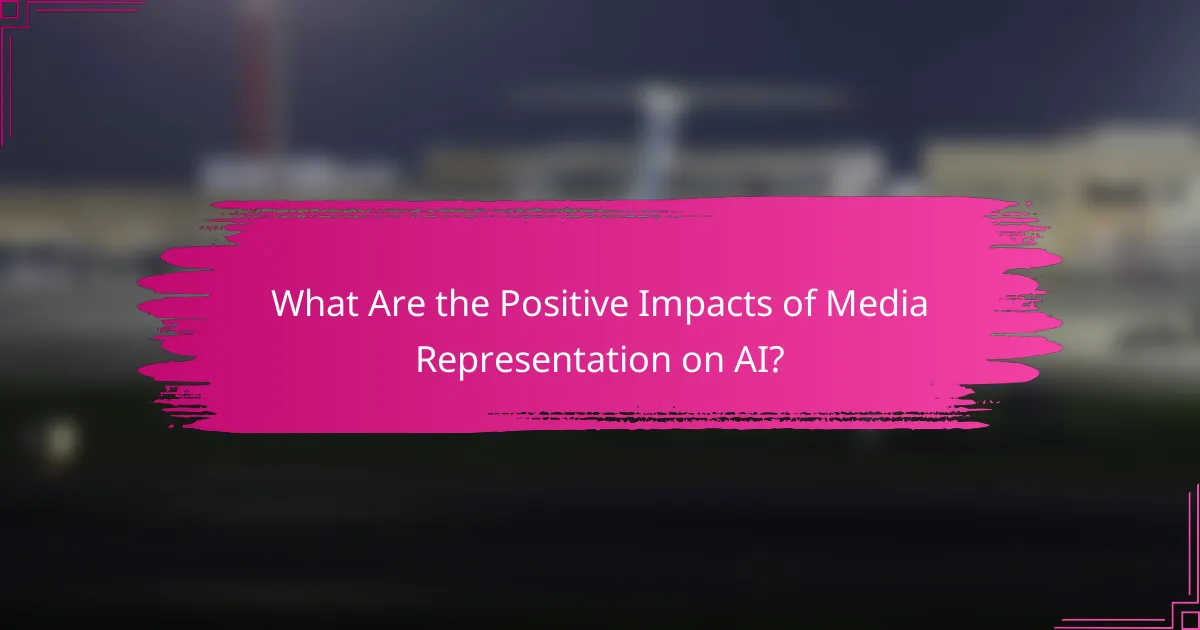
What Are the Positive Impacts of Media Representation on AI?
Media representation of AI can significantly enhance public understanding and acceptance of artificial intelligence technologies. By showcasing the benefits and potential of AI, media can foster a more informed and engaged society.
Increases awareness of AI benefits
Media plays a crucial role in highlighting the advantages of AI, such as improved efficiency in various sectors like healthcare, finance, and transportation. Through documentaries, news articles, and social media, audiences can learn about AI applications that enhance productivity, reduce costs, and improve decision-making.
For instance, stories about AI-driven diagnostics in healthcare can illustrate how these technologies lead to faster and more accurate patient care. As awareness grows, so does public support for AI initiatives, which can lead to broader acceptance and implementation.
Encourages innovation and investment
Positive media representation of AI can stimulate interest from investors and entrepreneurs, encouraging them to fund and develop innovative AI solutions. When the media portrays AI as a transformative force, it can attract venture capital and government funding, accelerating research and development.
Moreover, favorable coverage can inspire startups to explore AI applications in various industries, from agriculture to entertainment. This influx of investment not only drives technological advancements but also creates job opportunities and economic growth.
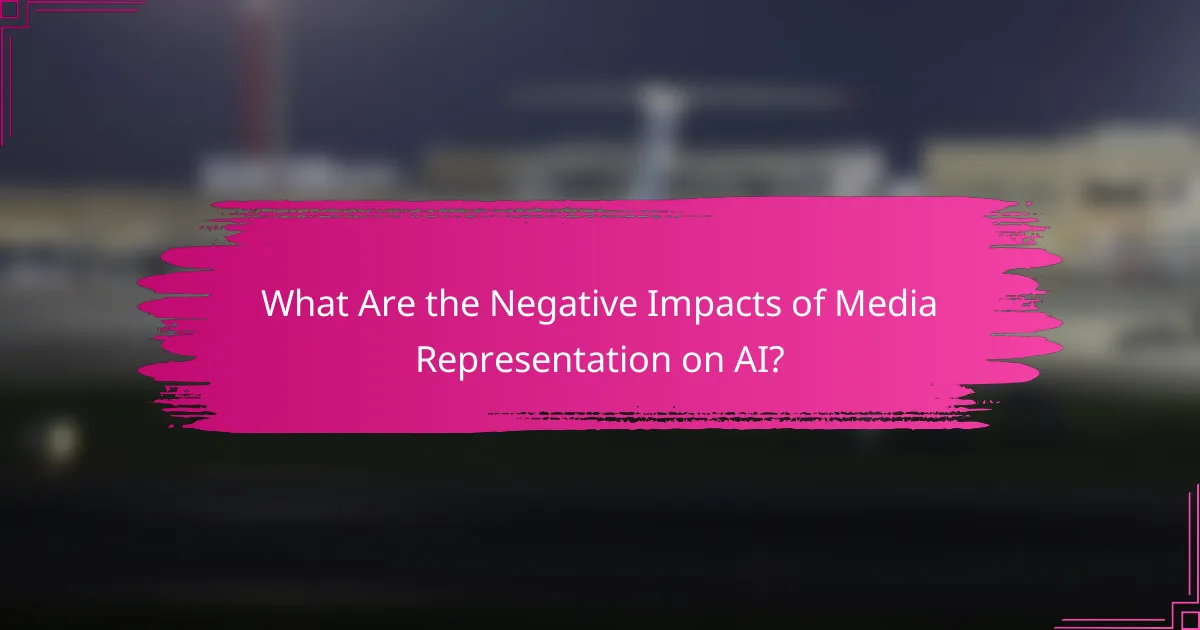
What Are the Negative Impacts of Media Representation on AI?
Media representation of artificial intelligence (AI) often leads to negative impacts by shaping public perception through exaggerated or inaccurate portrayals. These misrepresentations can hinder understanding and acceptance of AI technologies in society.
Perpetuates misconceptions about AI
Media often depicts AI as either a super-intelligent entity or a malevolent force, which creates misconceptions about its actual capabilities. For instance, the portrayal of AI in films as sentient beings can lead the public to believe that current AI systems possess consciousness or emotions, which they do not.
These misconceptions can result in unrealistic expectations regarding AI’s performance and limitations. People may assume that AI can solve complex problems autonomously, ignoring the fact that most AI systems require human oversight and intervention.
Fosters fear and resistance to adoption
Fear stemming from media portrayals can lead to resistance against adopting AI technologies in various sectors. When news stories focus on potential job losses or ethical dilemmas associated with AI, they can create a climate of anxiety that discourages innovation and investment.
To counter this fear, stakeholders should focus on transparent communication about the benefits and limitations of AI. Providing clear examples of successful AI integration in industries such as healthcare and finance can help alleviate concerns and promote a more balanced view of AI’s role in society.
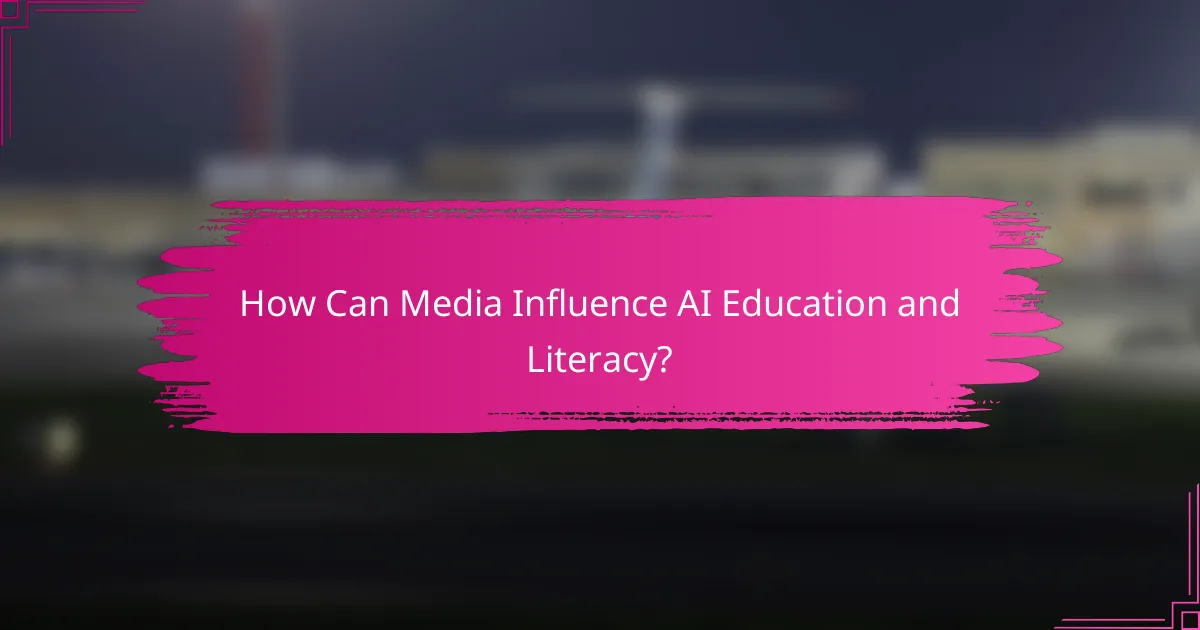
How Can Media Influence AI Education and Literacy?
Media plays a crucial role in shaping public understanding of artificial intelligence (AI) by providing information that enhances education and literacy. Through various platforms, media can demystify AI concepts and foster critical discussions that empower individuals to engage with this technology more effectively.
Promotes informed discussions about AI
Media coverage of AI can stimulate informed discussions by presenting diverse perspectives and expert opinions. When news outlets and online platforms feature debates, interviews, and articles, they encourage audiences to think critically about the implications of AI in society.
For instance, programs that invite AI researchers to discuss ethical considerations can help the public grasp the complexities of AI deployment. Engaging with these discussions allows individuals to form well-rounded views and question prevailing narratives.
Enhances understanding of AI capabilities
Media can enhance understanding of AI capabilities by illustrating practical applications and limitations through case studies and real-world examples. By showcasing how AI is used in industries like healthcare, finance, and transportation, media helps demystify the technology.
For example, articles that explain how AI algorithms improve diagnostic accuracy in medical imaging can clarify what AI can realistically achieve. This understanding helps prevent misconceptions and sets appropriate expectations about AI’s role in everyday life.
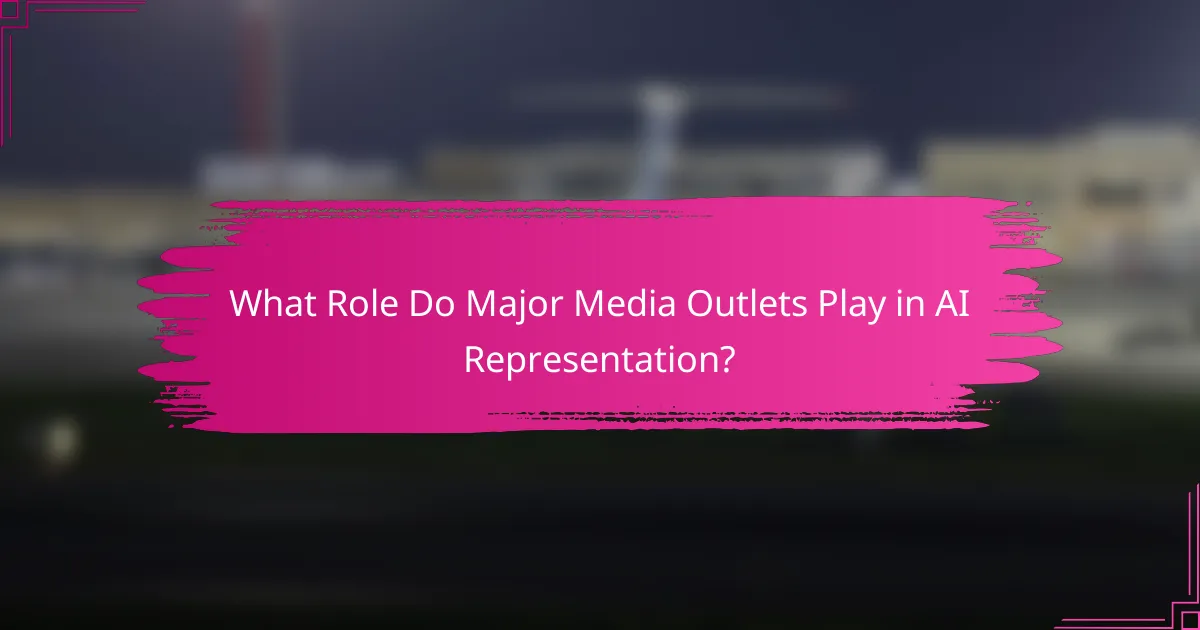
What Role Do Major Media Outlets Play in AI Representation?
Major media outlets significantly shape the public’s understanding and perception of artificial intelligence (AI) through their coverage and narratives. They can either foster informed discussions or propagate misconceptions, influencing how society views the capabilities and risks associated with AI technologies.
Set narratives around AI technologies
Media outlets create narratives that frame AI technologies in specific ways, often highlighting either their potential benefits or their associated risks. For instance, sensationalized stories about AI taking jobs can lead to public fear, while positive coverage of AI in healthcare can generate excitement about its possibilities. These narratives can shape public sentiment and influence how individuals and businesses approach AI adoption.
To counteract negative narratives, it is essential for stakeholders in the AI field to engage with media, providing accurate information and success stories. This proactive approach can help balance the portrayal of AI and emphasize its positive impacts on society.
Influence public policy on AI
Major media outlets play a crucial role in shaping public policy related to AI by bringing attention to specific issues and framing debates. When media coverage highlights ethical concerns, privacy issues, or the need for regulation, it can prompt policymakers to take action. This influence can lead to the development of laws and guidelines that govern AI usage.
To effectively influence public policy, it is important for AI advocates to collaborate with journalists, ensuring that accurate and comprehensive information is available. This collaboration can help create a more informed public discourse, ultimately leading to better policy outcomes that reflect the needs and values of society.
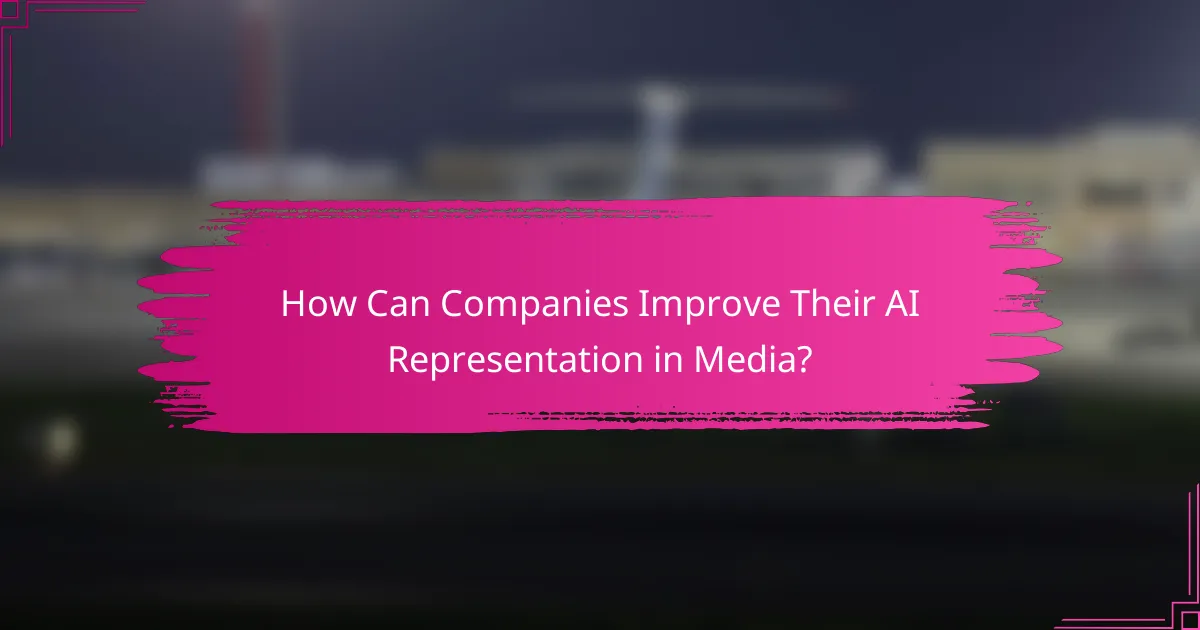
How Can Companies Improve Their AI Representation in Media?
Companies can enhance their AI representation in media by prioritizing transparency and collaboration. By openly communicating their AI capabilities and working with media professionals, they can ensure that the public receives accurate and nuanced portrayals of AI technologies.
Engage in transparent communication
Transparent communication involves sharing clear and honest information about AI systems, their functions, and limitations. Companies should provide accessible resources that explain how their AI works, its potential benefits, and any ethical considerations involved.
Regular updates through blogs, social media, and press releases can help demystify AI technologies. This proactive approach can build trust and mitigate fears surrounding AI, leading to a more informed public perception.
Collaborate with media for accurate portrayals
Collaboration with media outlets is crucial for ensuring that AI is represented accurately. Companies should seek partnerships with journalists and content creators who specialize in technology to provide insights and context that enhance storytelling.
Offering media training sessions or workshops can help journalists understand complex AI concepts, leading to more informed reporting. Additionally, companies can provide case studies or real-world examples to illustrate the positive impacts of AI, fostering a balanced narrative in the media.
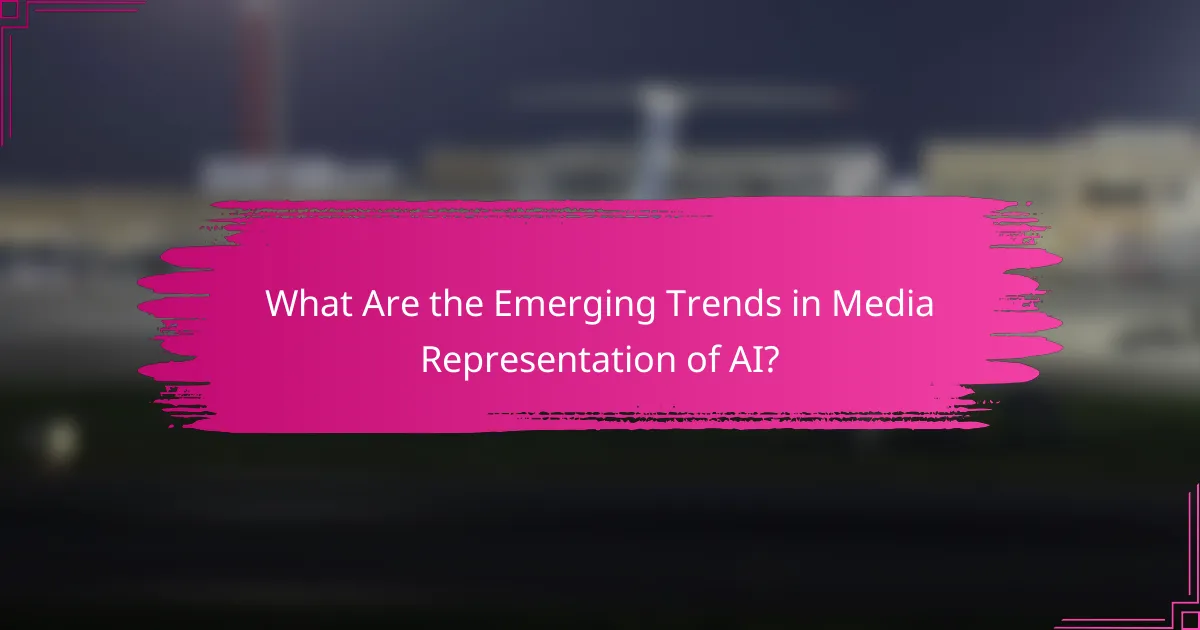
What Are the Emerging Trends in Media Representation of AI?
Emerging trends in media representation of AI indicate a shift towards more complex and realistic portrayals, moving away from simplistic narratives. This evolution reflects a growing understanding of AI’s capabilities and limitations, influencing public perception significantly.
Shift towards more nuanced portrayals
Media representations of AI are increasingly capturing the technology’s multifaceted nature, showcasing both its potential benefits and ethical concerns. Instead of depicting AI solely as a threat or a miracle solution, stories now often highlight the challenges of bias, accountability, and the human-AI collaboration dynamic.
For instance, films and series are beginning to explore themes like the moral implications of AI decisions and the importance of human oversight. This nuanced approach helps audiences grasp the complexities of AI, fostering informed discussions rather than fear-driven reactions.
Increased focus on ethical considerations
As AI technology advances, media narratives are placing greater emphasis on ethical considerations surrounding its use. Topics such as data privacy, algorithmic bias, and the societal impact of automation are becoming central themes in documentaries, news articles, and fictional works.
This focus encourages viewers to think critically about how AI affects their lives and the importance of regulatory frameworks. For example, discussions around GDPR in Europe highlight the need for responsible AI deployment, prompting audiences to advocate for transparency and accountability in AI systems.
Representation of diverse voices in AI discussions
There is a noticeable trend towards including diverse voices in conversations about AI, moving beyond the traditional tech-centric narratives. Media outlets are increasingly featuring experts from various fields, including ethics, sociology, and law, to provide a broader perspective on AI’s implications.
This inclusivity enriches the dialogue, allowing for a more comprehensive understanding of AI’s impact on different communities. By showcasing diverse viewpoints, media can help ensure that AI development considers the needs and concerns of all stakeholders, not just those in the tech industry.
